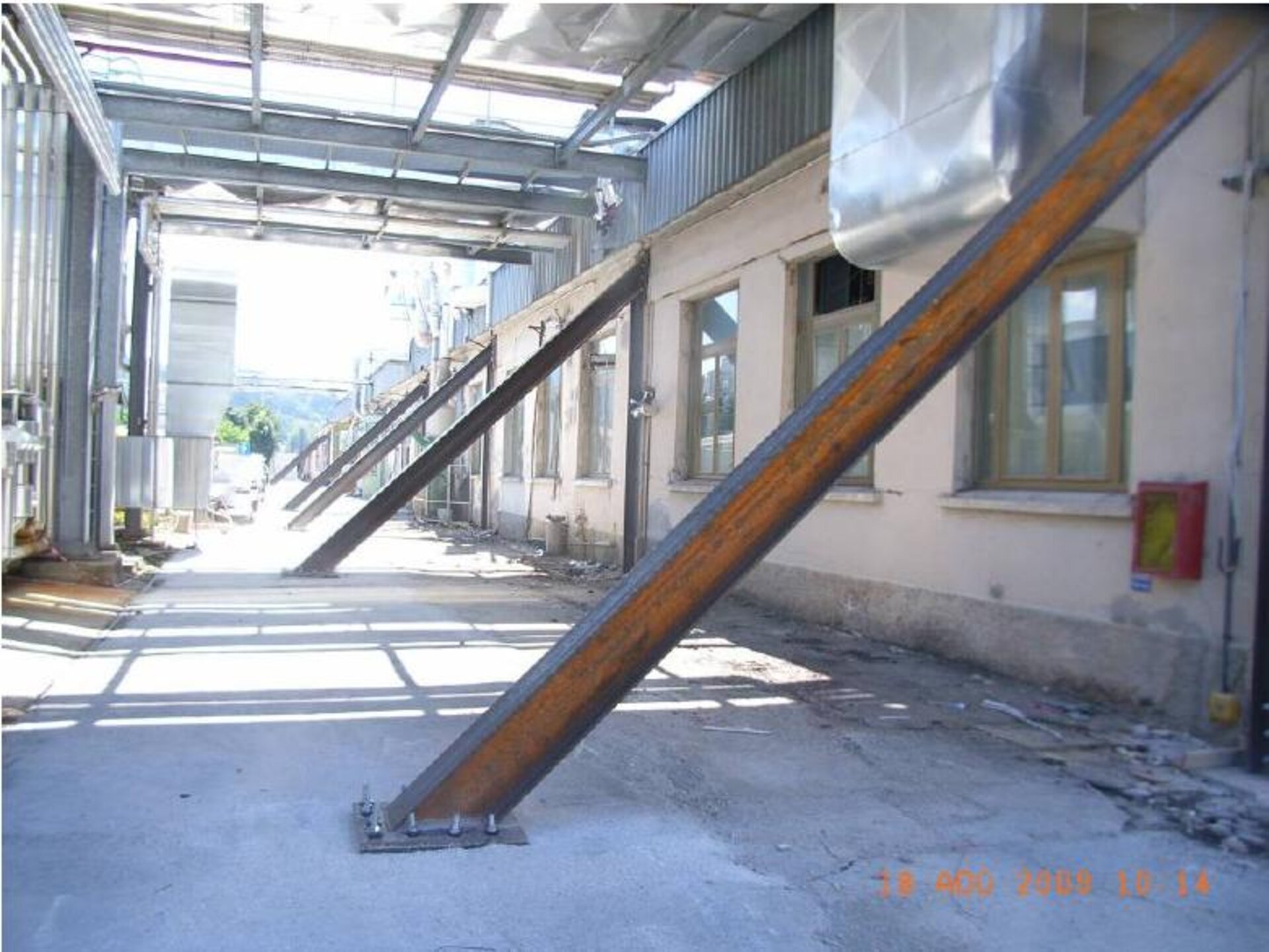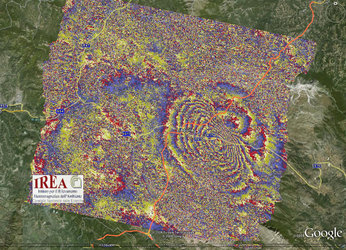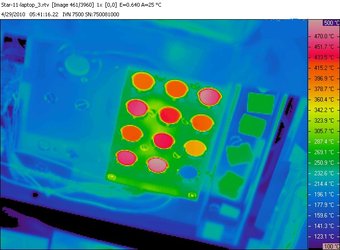ESA helps space facility recover from L’Aquila earthquake
On 6 April 2009 an earthquake struck L’Aquila in central Italy, levelling the town centre. More than 300 people died, tens of thousands of people lost their homes – and a hole suddenly formed in the European space industry.
A 300-employee Thales Alenia Space (TAS) facility was based close to the walls of L’Aquila, producing specialised electronic components and composite materials for a variety of space missions including key electronic elements of ESA’s Sentinel-1 radar system.
TAS’s L’Aquila plant paid its toll twice: a young employee died in the collapse of her downtown house and the plant itself was severely damaged. ESA experts would play a major role in the relocation effort that followed.
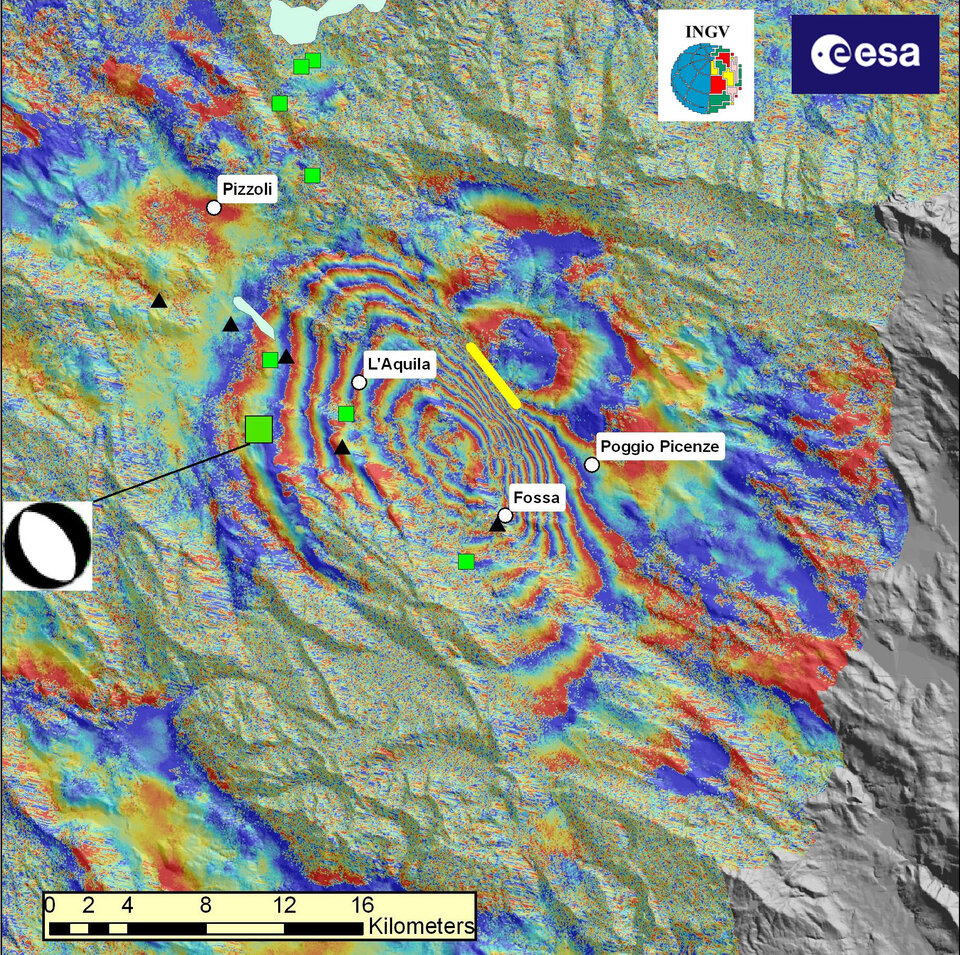
TAS management were faced with the major challenge of salvaging flight hardware and manufacturing equipment from within the stricken site, which the fire brigade kept sealed for almost two weeks following the main quake.
In the meantime, production could not be halted: in the short term, work was relocated to other facilities around Europe, with the intention of returning the bulk of it to a new L’Aquila site (with substrate manufacturing moving to a facility in Rome, 100 km away).

Just as important as restarting production processes was revalidating them – the process of proving to customers that the disruption had in no way compromised their rigorous technical requirements. It was here that ESA’s Product Assurance and Safety Department team came in, advising TAS on their recovery plan and devising a rigorous verification campaign, including tests and inspections.
Some 15 months on from the earthquake, all new production lines and areas in L’Aquila and Rome have been revalidated and a major local employer put back to work. On 30 June a grateful TAS handed commemorative plaques to five ESA Product Assurance personnel to thank them for their contributions to the recovery.

“For our business it is the first case like this, and hopefully the last,” said Product Assurance engineer Remo Cirone.
“What was needed was to demonstrate that the same people using the same equipment but located at a different site could still produce items to the exact same quality level.
“We stepped in to offer the ESA stamp of approval, important for our own affected projects, including Sentinel-1, but also to reassure TAS’s commercial customers.
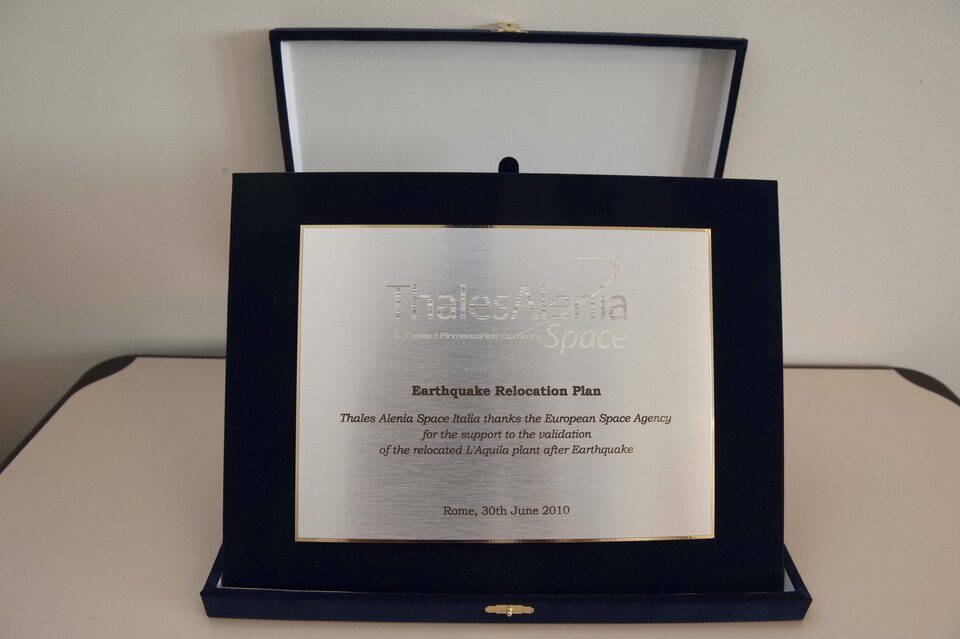
“We provided an independent and external eye. In June we agreed a specific quality recovery plan with TAS agreeing all tests and audits to be carried out. It was a lot of work for one year, but both sides were committed to the goal.”
More than 4300 items of flight hardware were salvaged from the ruined plant from when the fire brigade first opened access on 19 April 2009.
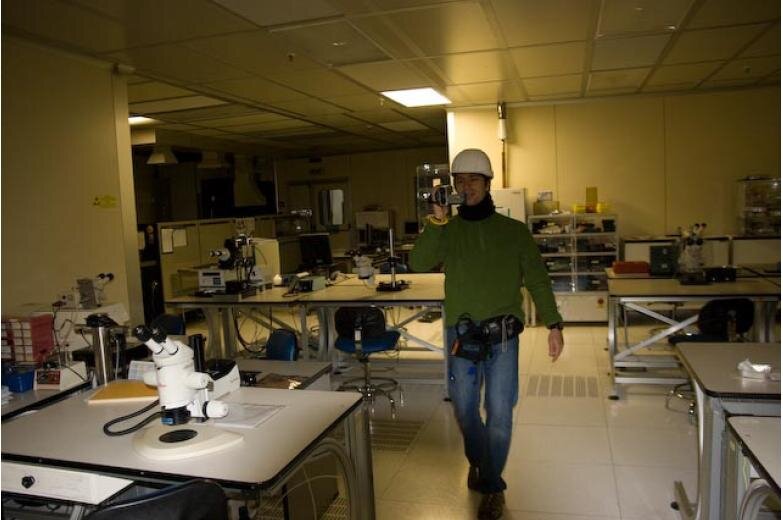
Offices on the west side of the plant had nearly collapsed. Fortunately, the cleanroom area on the east side remained structurally intact – it had once been a state mint, and endured Second World War bombing – although internal cladding and fittings had given way.
TAS engineers were reminded of Chernobyl’s aftermath. They worked like archaeologists entering an ancient site: wearing anti-static gloves and bracelets, they documented everything with video footage and hundreds of photos and compiled temperature and humidity readings.

An emergency generator had kicked in once the mains power failed. This maintained internal environmental conditions with only minor interruptions, so for example sensitive components were kept bathed in neutral nitrogen gas.
Salvage operations continued around the clock until the start of June. The largest items to be extracted were manufacturing machinery and one-of-a-kind test equipment: one antenna measuring device came to around 10 cubic metres.
L’Aquila has resumed in a temporary site rented for the purpose, with work beginning on a new purpose-built facility this month.


